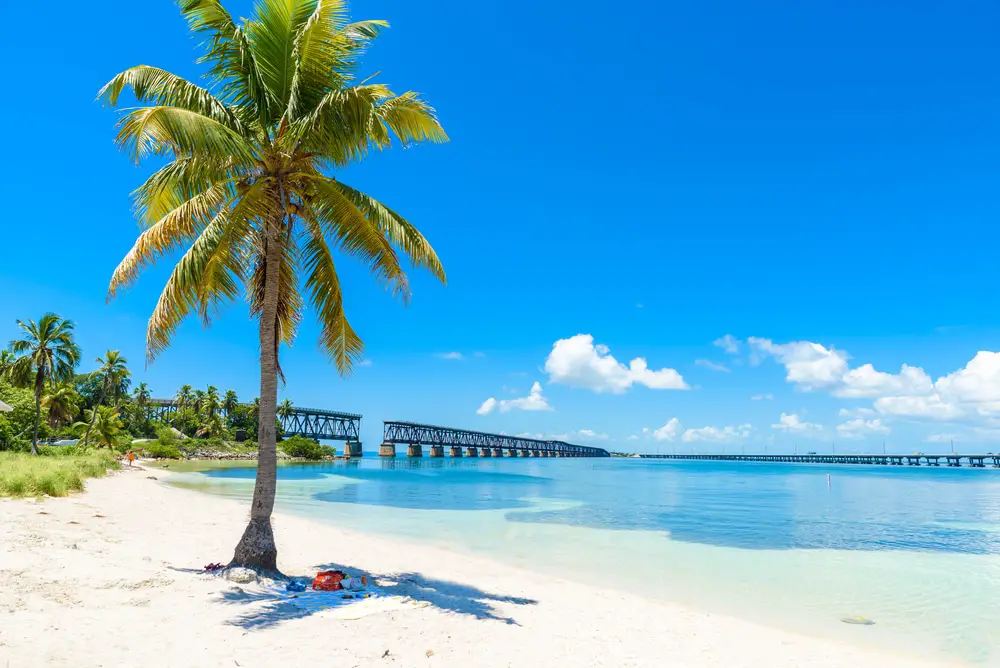Yatch Essentials: Yes, we spelled it "Yatch" on Purpose to Match Common Search Trends
Yachts have become a symbol of luxury and leisure, showcasing the finest in naval engineering and design. Originally, these vessels were primarily used by the Dutch navy for short and quick voyages.
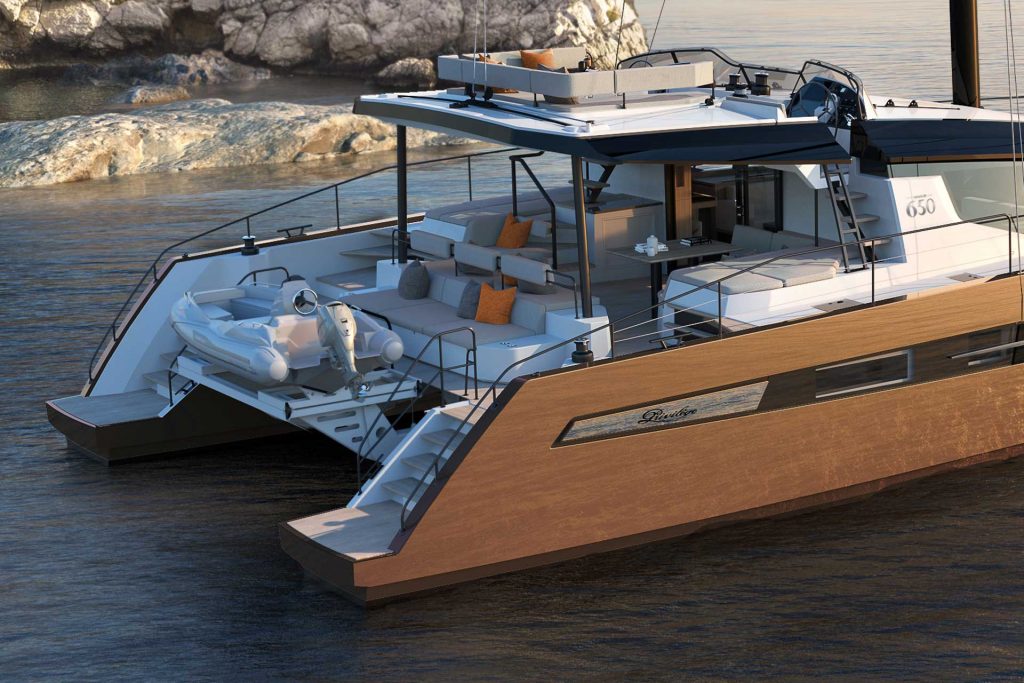
Over time, yachts have evolved to encompass a wide range of sailing and motor-powered boats designed for comfort and style. Modern yachts now cater to those seeking an exclusive and lavish experience on the water.
The world of yachting includes various types, from traditional sailing yachts to state-of-the-art superyachts.
The industry offers a multitude of options for prospective buyers, with considerations ranging from budget to desired features.
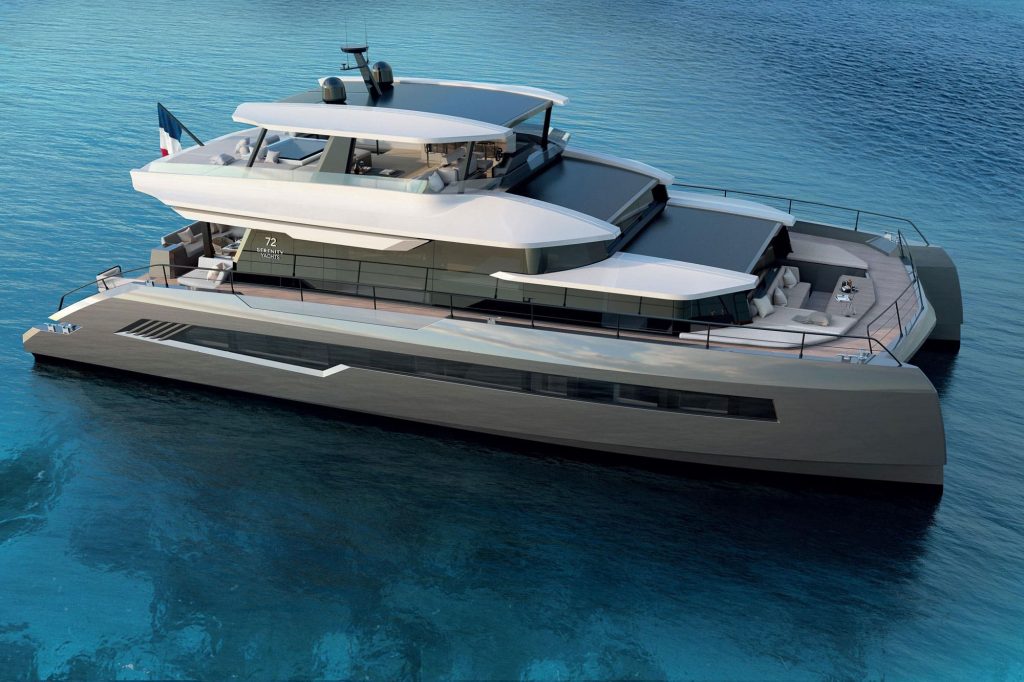
Ownership and operation of such vessels come with certain responsibilities, as safety and adherence to global yachting regulations are essential.
Ultimately, the yachting lifestyle enables a unique connection to the sea and offers unparalleled opportunities for exploration and relaxation.
Key Takeaways
- Yachts originated as naval vessels and have since become symbols of luxury and leisure for avid boaters.
- Modern yachts come in various types, from sailing boats to superyachts, catering to different budgets and preferences.
- Safety and adherence to regulations play a crucial role in the ownership and operation of yachts.
History and Evolution
Early Designs
The history of yachts can be traced back to the ancient Egyptians, who used reeds to build some of the first sailing boats in the world around 4000 BC. These reed boats had sails and a mast and were primarily used on the Nile River1.
By 2500 BC, the Egyptians began constructing wooden boats capable of ocean sailing2.
In the 14th century, the Dutch invented the first yachts3. These small, fast boats were initially used for chasing smugglers, pirates, and criminals.
Wealthy ship owners and merchants started using these yachts (known as "jaghts") for leisurely outings to celebrate their returning merchant ships4.
Over time, the development of sailing and motor yachts continued to evolve with advancements in technology, navigation, and construction.

Development of Superyatchs
With the advent of motorized propulsion systems, yachts gradually evolved from primarily sailing vessels to motor yachts. This shift resulted in larger, more luxurious vessels that catered to the lifestyles of the rich and famous.
The development of superyachts, or large motor yachts over 24 meters in length, further pushed the boundaries of luxury and opulence.
Throughout history, the evolution of yachts has been characterized by the following milestones:
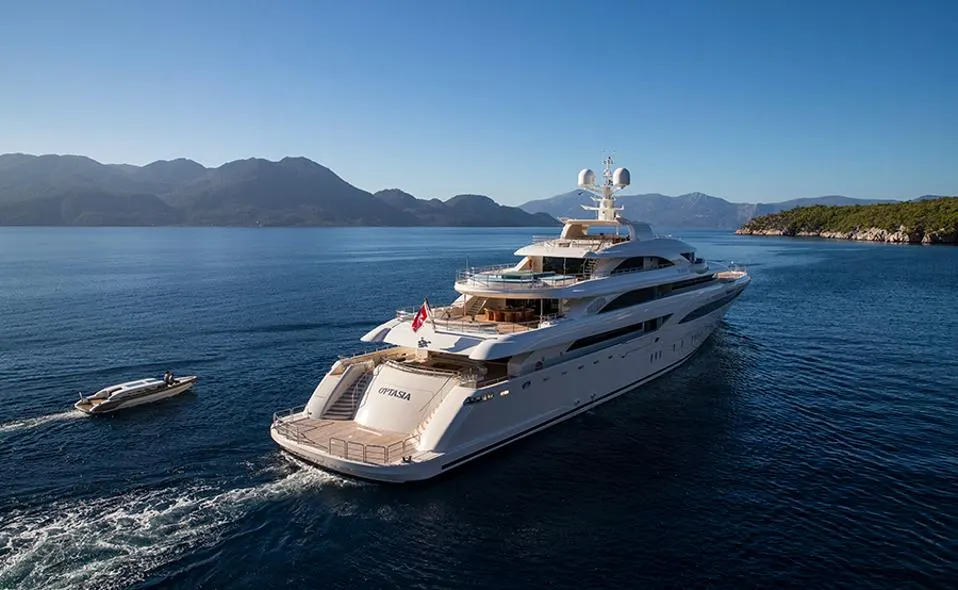
- 4000 BC: First sailing boats built with reeds by the Egyptians1.
- 2500 BC: Wooden boats built for ocean sailing by the Egyptians2.
- 14th Century: First "jaghts" or yachts invented by the Dutch3.
- Modern Era: Development of motor yachts and superyachts5.
The history and evolution of yachts showcase the significant advancements in technology, materials, and design that have shaped the boating industry. Innovative engineering has made it possible for yachts to become more efficient, luxurious, and capable of navigating the world's oceans.
Footnotes
- A Timeline of Ships, Boats, and Yachts | HMY Yachts ↩ ↩2
- The Evolution of Boats Over Time: A Journey Through History ↩ ↩2
- History of the Yacht - American Sailing ↩ ↩2
- Yacht System Evolution: A Historical Perspective - FLY Yachts ↩
- The Evolution of the Yacht - JSTOR ↩
Types of Yatchs
Sailing Yatchs
Sailing yachts are graceful vessels that use wind power to navigate the seas. They come in various sizes, from smaller sailboats to luxurious superyachts.
One common type of sailing yacht is the sloop, a single-masted boat with one mainsail and one headsail.
These yachts are perfect for those who enjoy the art of sailing and the serene experience it offers.
They can be constructed from a variety of materials including wood, steel, aluminum, and plywood, depending on the desired performance and aesthetics.

Motor Yatchs
Motor yachts, also known as powerboats, rely on engines for propulsion and are known for their speed and agility.
These yachts come in many different shapes and sizes.
For those seeking high-performance and luxury, superyachts can reach impressive speeds and provide ample amenities.
On the other hand, Rigid Inflatable Boats (RIBs) are smaller, lightweight, and versatile motor yachts popular for their speed and easy maneuverability.
They are ideal for various activities such as watersports, fishing, or short coastal trips.

Expedition Yachts
Expedition yachts, also known as explorer yachts, are designed for long-distance cruising and self-sufficiency.
These vessels are well-equipped to handle harsh conditions and extended periods on the water.
Often, they feature fuel-efficient engines and comfortable living spaces for passengers.
Expedition yachts are perfect for adventurers, as they can access remote areas and traverse vast distances with ease.
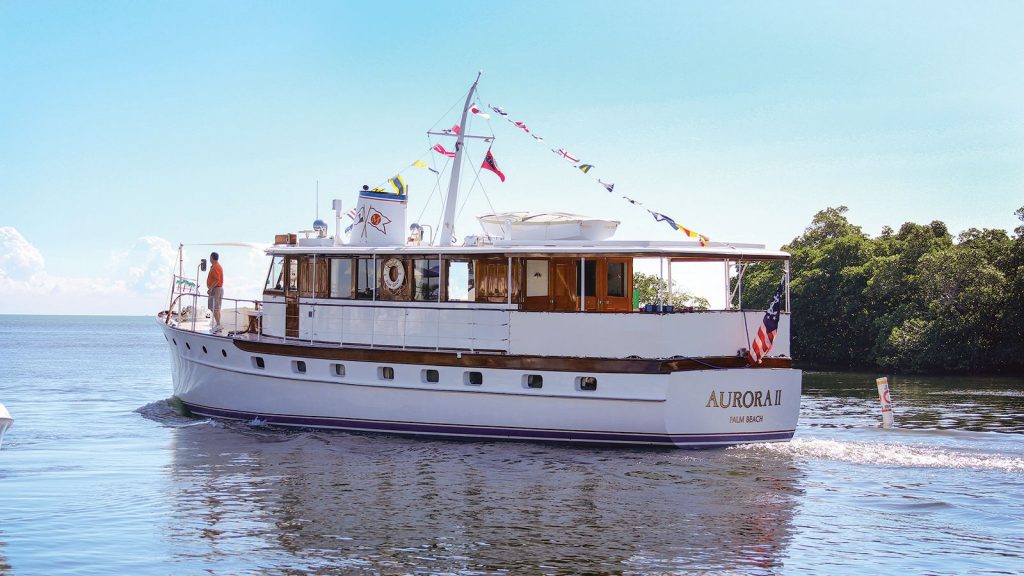
Classic Yachts
Classic yachts encompass a wide range of traditional vessel designs, many of which feature elegant woodwork and timeless aesthetics.
These include classic sailing yachts, with their beautiful wooden masts and hulls, as well as vintage motor yachts that exude charm and luxury from a bygone era.
Owners of classic yachts often value the history, craftsmanship, and character that come with these vessels.
Notable types of yachts within the classic category include:
- Sailboats: Characterized by their reliance on wind power and traditional designs.
- Powerboats: Featuring motorized propulsion and various sizes and styles from small runabouts to large cruisers.
Buying a Yacht
New vs Pre-Owned
When considering the purchase of a yacht, buyers must decide between buying new or pre-owned.
New yachts offer the advantage of customization and cutting-edge technology, while pre-owned yachts can be more affordable and retain their value well if properly maintained.
Carefully evaluate your needs, preferences, and budget before deciding which type of yacht to purchase.
Yacht Brokers and Dealerships
Making use of yacht brokers and dealerships should be an essential part of the yacht-buying process. They possess extensive market knowledge and professional expertise.
These professionals will help guide you through the transaction process. They will assist you from selecting the right yacht to negotiating the price and preparing the necessary paperwork. Engaging with reputable brokers, such as Fraser Yachts and Burgess Yachts, is recommended to ensure a smooth and satisfactory purchase.

Specialised Search Services
To assist in finding the perfect yacht, utilise specialised search services like SeaMagazine and BOAT International.
These platforms provide access to large databases of yachts for sale, complete with photos, videos, and detailed specifications. Filtering options help narrow down the search based on factors such as yacht type, length, asking price, and age.
Here are some tips for using specialised search services effectively:
- Create an account: This allows you to save your searches and receive notifications about newly listed yachts that match your criteria.
- Sort by relevance: Prioritize listings that closely match your preferences.
- Explore different categories: Investigate various yacht types and brands to broaden your knowledge and better understand what fits your needs.
Remember to consult with yacht brokers and industry experts, while also incorporating personal research to make an informed decision when purchasing a yacht.
Ownership and Operation
Costs and Maintenance
Owning a yacht is a luxury, but it also comes with its share of responsibilities and costs. Yacht owners often face various ongoing expenses such as maintenance and repairs, crew salaries, insurance premiums, fuel, dockage fees, and operational costs1.
Yacht owners must budget meticulously and factor in these recurring expenditures to ensure smooth operations and avoid financial surprises. Some owners also choose to co-own a superyacht to share these costs and have a tailored usage experience2.
Crew Management
A well-trained and professional crew is vital to ensuring that the yacht stays in prime condition, runs smoothly, and provides excellent service to the owner and their guests.
Yacht owners may also need to consider crew placement services3 to source, manage, and train professionals who meet their specific requirements.
They also need to be aware of employment laws for crew members. This ensures all regulations are followed and proper training is provided to avoid accidents and liabilities3.
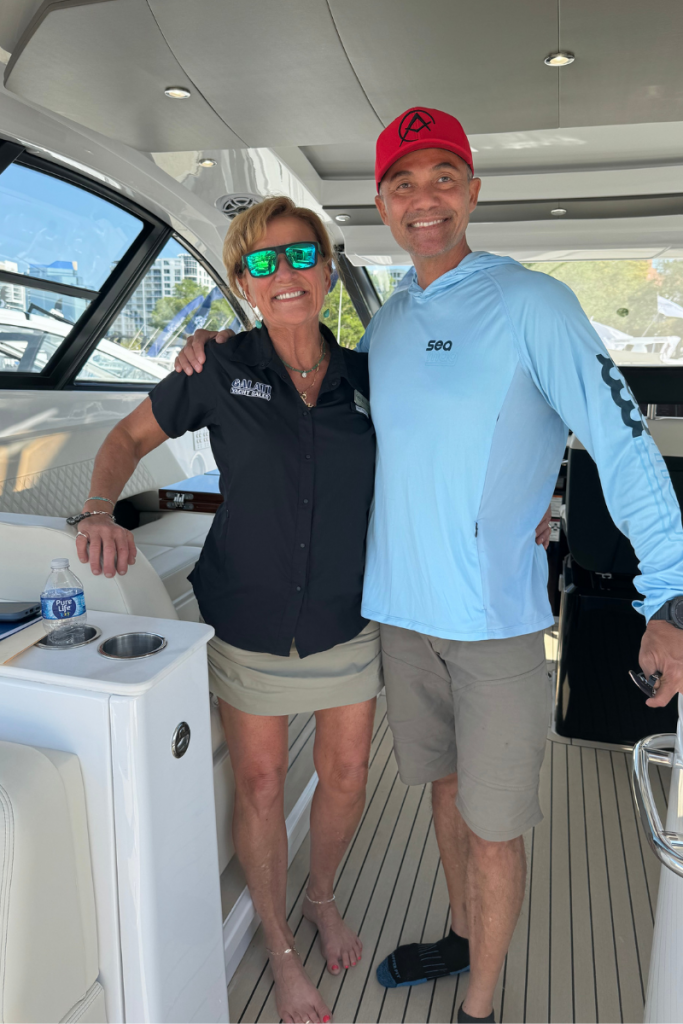
Yatch Management Companies
Yacht management can be both challenging and time-consuming. To help with this, many yacht owners choose to rely on yacht management companies4.
These companies offer a full range of yacht management services, including financial reporting, technical support, operational management, and crew placement1 .
By using a management company, yacht owners can save time, reduce risks, and enjoy their yacht experience with peace of mind. Some companies also offer specialized services such as flag registration, custom HR solutions, and crew management3.
Yacht Design and Features
Design Considerations
When designing a yacht, numerous factors come into play, such as the overall length, cabin layout, and other aspects that cater to the owner's needs and preferences.
A yacht designer must listen to the client's wishes, dreams, and needs to create a personal, beautiful, and cozy space that reflects the personality of the owners and their families.
Different yacht designs cater to varying needs and environments. The length of a yacht is an important aspect and may range from pocket yachts, which are smaller in size, to luxury yachts that can exceed 100 feet.
Other factors that come into play include the type of bridge used for navigating the yacht, the materials used for constructing the hull, and specific design features for handling challenges such as ice and harsh sea conditions.
Interior and Comfort
The interior design of a yacht is crucial, as it offers comfort, luxury, and functionality to its occupants.
The cabin layout must make efficient use of the available space, providing ample sleeping quarters, storage, and recreational areas.
Typically, luxury yachts are equipped with high-end materials and amenities to provide a lavish experience for the owner and guests.
Creating intimate and comfortable spaces is a priority in yacht design. This involves incorporating elements such as plush seating, elegant lighting, and tailored entertainment systems.
Designers and shipyards work closely together to ensure the final product caters to the owner's specific needs and preferences, offering a truly personalized experience.
Innovations and Technology
In recent years, the world of yacht design has seen various innovations and advancements in technology.
Some of the most exciting superyacht concepts feature unique elements such as detachable control towers and avant-garde designs that challenge the conventional norms of maritime architecture.
Yachts are also becoming more environmentally friendly. They incorporate sustainable materials and energy-efficient systems to reduce their environmental impact.
Cutting-edge technologies are applied to improve performance, safety, and overall user experience. Examples include advanced navigation systems, hydrofoil designs for improved stability, and automation features for ease of operation.
The Yachting Lifestyle
Travel and Adventure
The yachting lifestyle offers opportunities for luxurious travel and adventure.
Exploring different parts of the world on a yacht provides an unparalleled sense of freedom and discovery. Many yacht owners enjoy cruising to exotic locations while discovering hidden gems and private beaches.
Charter yachts are an excellent way for those new to yachting or experienced individuals to explore the seas in a luxurious and comfortable setting.
The amenities on such yachts typically include spacious accommodations, fine dining experiences, and world-class entertainment options.
Events and Regattas
A significant aspect of the yachting lifestyle is attending exclusive events and regattas. These gatherings showcase competitive racing.
Some events have prestigious reputations in the yachting world. Participating in or attending regattas offers yacht owners and enthusiasts the chance to socialize with others who share their passion for luxury and adventure while enjoying spirited competition on the open water.
These events often feature elegant galas, where attendees can mingle and appreciate the finer things in life.
Some notable regattas include:
- Monaco Grand Prix
- Palma Superyacht Cup
- St. Barths Bucket Regatta
Yacht Clubs and Communities
Yacht clubs and communities play a central role in the yachting lifestyle. They provide opportunities for yacht owners and enthusiasts to connect with like-minded individuals.
Members can participate in exclusive events, attend club functions, and enjoy luxurious amenities that cater to their unique interests.
Yacht club membership can benefit yacht owners in various ways, such as:
- Access to exclusive facilities and resources
- Opportunities to participate in regattas and racing events
- Networking with other yacht owners and enthusiasts
- Participation in yachting education programs
Global Yachting Industry
The global yacht market has been growing steadily in recent years. There has been a significant increase in demand for luxury and recreational marine activities. The market size was valued at USD 8.91 billion in 2022 and is expected to expand at a compound annual growth rate (CAGR) of 5.8% from 2023 to 2030.
Leading Manufacturers
Several prominent yacht manufacturers contribute to the market's growth. These companies focus on incorporating cutting-edge technologies, such as advanced navigation, into their designs to meet the evolving needs of yacht enthusiasts.
Some of the top manufacturers in the global yacht industry include Azimut Benetti, Ferretti Group, and Feadship. The United States is home to several prominent manufacturers as well, such as Viking Yachts and Westport.
Worldwide Brokerage Networks
As the market for luxury yachting expands, brokerage networks play a crucial role in connecting buyers and sellers.
Companies like Fraser offer extensive services, including yacht sales, charters, and management. With the largest fleet of superyachts available globally, networks like these strive to meet the diverse needs of their clientele.
- Fraser: A leading brokerage network, Fraser is known for its expertise in yacht sales, charters, and management services.
- Burgess: A global leader in the superyacht industry, specializing in yacht sales, charter, and yacht management services.
- Camper & Nicholsons: A prestigious name in the yachting industry, providing yacht sales, charter, and management services.
Economic Impact
The global yacht industry has a significant economic impact, providing numerous employment opportunities in manufacturing, brokerage, and tourism. In the United States, for instance, yacht manufacturing contributes to the nation's economy, with the US market valued at USD 18.9 billion in 2020.
Notable Superyachts
Among the many impressive superyachts sailing in the world today, some stand out due to their luxurious amenities, design, and size.
The Moonlight II, for example, is a stunning 91.4-meter vessel known for its remarkable onboard features such as a helicopter pad, cinema, and spa.
Equally elegant, the Silver Edge reflects the perfect blend of luxury and performance.
The 76.6-meter Yersin yacht is designed to be eco-friendly and built for scientific expeditions. Its state-of-the-art features make it particularly suited for long-range cruising and exploration.
One of the most modern yachts, Planet Nine, is remarkable for its vast size, measuring 73 meters, and elegant design. It features a helipad, cinema, and an extensive beach club, making it an ideal choice for those seeking a luxurious experience.
Force Blue is another notable superyacht, known for both its style and power. Built by Royal Denship, it has a sleek design and is outfitted with luxurious amenities, including a spa.
With a focus on classic sailing, the 64.5-meter Atlantic is a replica of the famous Townsend & Downey schooner constructed in 1903 and now features the latest technological advancements in the yachting world.
Similarly, the Olympus, Seagull II, and Vibrance yachts incorporate classic design elements with modern technology, making them elegant and enjoyable vessels.
Some remarkable sailing yachts, like Legato and Status Quo, focus on combining luxury and performance. Both of these vessels offer sleek designs and state-of-the-art technology, making them popular among sailing enthusiasts.
Finally, the beautiful sailing yachts Ellen and Aristarchos boast traditional rigging and elegant lines, providing both comfort and style for long-distance cruising. Ellen, in particular, has an impressive pedigree, built by the renowned Dutch shipyard Perini Navi.
Yachting Regulations and Safety
International Maritime Laws
The International Safety Management (ISM) Code is a set of international guidelines established by the International Maritime Organization (IMO) to ensure safety at sea, prevent human injury or loss of life, and avoid damage to the marine environment.
All commercially registered yachts over 500 gross tonnes must adhere to these guidelines, which lay the foundation for a safe and fulfilling yachting experience.
When it comes to safety equipment, a comprehensive list can be found in the Yacht Safety Guide, which includes essential items such as fire extinguishers, life jackets, flares, and VHF radio.
In addition to these mandatory items, the guide recommends carrying a life buoy and other equipments that can be useful in case of emergencies.
Safety and Training
Proper training and education are crucial for ensuring the safety of all individuals on a yacht. This includes knowledge of regulations, practical skills, and emergency procedures.
Safety courses and certifications are available for yacht crews, providing them with the necessary expertise to navigate, maintain, and operate yachts efficiently.
Specifically, Yachting New Zealand Safety Regulations provide comprehensive safety requirements and recommendations for sailing enthusiasts.
These regulations serve as a valuable resource for boating safety education and can help improve overall sailing competency.
When managing a yacht, it is possible to simplify the entire safety and compliance process using Flagship software.
Flagship is a secure, cloud-based vessel management system that allows efficient management of critical information and processes pertaining to yacht safety.
Frequently Asked Questions
How is the term 'yacht' pronounced?
'Yacht' is pronounced as /jɒt/ (rhymes with 'hot' or 'brought').
What distinguishes a yacht from a regular boat?
A yacht is a recreational vessel, often designed for luxury and comfort for its passengers.
While regular boats can be designed for various purposes, such as fishing, transportation, or cargo, yachts are specifically made for leisure.
Yachts can vary in size, and depending on their amenities, they can be classified as superyachts or even mega yachts.
What are the typical costs associated with owning a yacht?
Owning a yacht can be expensive, as it comes with several costs. These include the initial purchase price, insurance, dockage fees, maintenance, and operational costs. New sailboat prices can range anywhere from $226,000 to $472,000, while superyachts and mega yachts can cost millions of dollars. Link to sailboat prices
What should one consider when looking to rent a yacht?
When renting a yacht, consider the destination, dates, type of yacht, budget, and other preferences. It's essential to make a reservation online through a platform like Moorings.com or speak with vacation planning specialists over the phone.
How does the size of a yacht affect its classification?
There is no strict classification system for yachts based on size. However, the term superyacht generally refers to yachts over 100 feet in length, while mega yachts are typically larger than 200 feet. Other classifications, such as expedition or explorer yachts, are more focused on the yacht's ability to travel long distances and explore remote locations. Link to expedition yacht FAQ
Are there specific qualifications required to operate a yacht?
Yacht operators should possess relevant certifications and licenses depending on the yacht's size and local regulations.
For recreational boats like sailboats, certifications like the International Certificate of Competence (ICC) or the American Sailing Association (ASA) are often required.
Larger yachts or superyachts might need a professional crew with specialized licenses and qualifications.
Charlie is Editor-in-Chief of Sea Magazine

